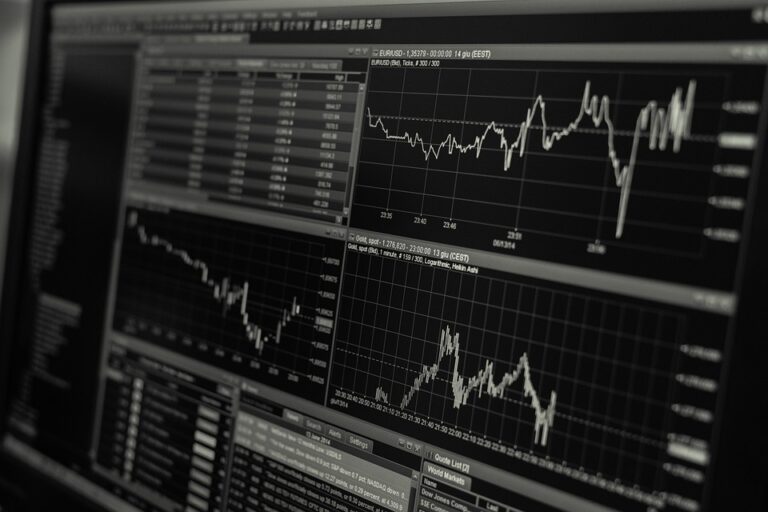Project 2025: A Deep Dive into Economic Setbacks for the USA
The rosy expectations of economic stability and growth have often been rocked by unexpected events. As we find ourselves in the thick of 2023, with just two years to go until the anticipated milestone of 2025, it’s crucial to examine the potential economic setbacks that could hamper the USA’s progress and what steps can be taken to mitigate these challenges.
The Current Landscape
Before delving into the intricacies of 2025, a brief overview of the current economic landscape is essential. The USA has been grappling with varying degrees of inflation, labor market fluctuations, and supply chain disruptions — a side effect of the pandemic reverberating through sectors across the board. Despite a resilient recovery drive, concerns over sustainable growth, coupled with geopolitical tensions and climate-related exigencies, suggest a tumultuous path ahead.
Inflationary Pressures
One significant concern as we approach 2025 is the persistence of inflation. After the initial economic disruptions post-pandemic, efforts to revive consumption and investment have rekindled inflationary trends. The Federal Reserve has actively adjusted interest rates to curb inflation, but the balance between stimulating economic growth and controlling inflation remains delicate.
Inflation erodes purchasing power, increases the cost of living, and can prompt a vicious cycle of wage demands and price hikes. Persistent inflation could lead to higher interest rates, further stifling investment and consumer spending.
Labor Market Realities
The labor market has been another critical area of concern. The "Great Resignation" phenomenon has seen a significant number of employees opting out of the workforce or switching careers, leading to labor shortages in critical sectors. Companies are grappling with the challenges of attracting and retaining talent, often at the cost of increased wages.
Moreover, the rapid advancements in automation and artificial intelligence pose a dual threat and opportunity. While they can drive efficiency, they also risk rendering certain jobs obsolete, necessitating significant reskilling and upskilling initiatives.
Supply Chain Disruptions
2023 has not been kind to global supply chains, and this issue is likely to extend into 2025. The interconnected nature of global trade means that disruptions in one part of the world can ripple across continents. The semiconductor shortage is a case in point, affecting industries from automobiles to electronics.
Persistent supply chain disruptions can lead to production delays, increased costs, and decreased competitiveness for US businesses. Diversifying supply sources and investing in domestic manufacturing capabilities are crucial steps to mitigate this risk.
Geopolitical Tensions
Geopolitical tensions continue to create uncertainty on the economic front. The USA’s relationship with China, trade disputes, and the dynamics of international alliances like NATO play significant roles. Sanctions, tariffs, and trade wars can disrupt markets and lead to escalating costs for businesses and consumers alike.
Climate Change and Environmental Concerns
Climate change is an ever-present challenge that has economic implications. From devastating natural disasters to the shifting dynamics of energy production, the economic costs of climate change are profound. The transition towards a green economy, while necessary, requires substantial investment in renewable energy, infrastructure, and technology.
Policy and Governance Challenges
Federal and state-level policies also play a crucial role in shaping the economic landscape. Uncertainty regarding tax policies, regulatory frameworks, and government spending can create an unpredictable business environment. Effective governance and bipartisan cooperation will be pivotal in implementing long-term strategies for economic stability.
Strategies for Mitigation
While the potential setbacks are significant, proactive measures can help mitigate these challenges:
-
Monetary and Fiscal Policies: Central banks need to strike a balance between controlling inflation and promoting growth. Transparent and predictable monetary policies, coupled with fiscal measures that target critical investments in infrastructure and technology, are essential.
-
Workforce Development: Investing in education, training, and reskilling programs can prepare the workforce for the demands of a modern economy. Public-private partnerships can play a vital role in this transformation.
-
Supply Chain Resilience: Encouraging domestic manufacturing and fostering diversified international partnerships can build more resilient supply chains.
-
Sustainable Practices: Transitioning to a green economy requires a blend of policy incentives and corporate responsibility. Investments in renewable energy sources, energy-efficient technologies, and sustainable practices can reduce the economic impact of climate change.
- Diplomacy and Trade Relations: Constructive diplomacy and strategic trade agreements can alleviate geopolitical tensions. Multilateral cooperation on trade, security, and environmental issues can foster a stable economic environment.
Conclusion
Project 2025 underscores the need for vigilance, adaptation, and strategic foresight as we navigate economic uncertainties. Understanding and addressing these potential setbacks are crucial for sustainable growth and prosperity. While the road ahead may be fraught with challenges, a concerted effort by policymakers, businesses, and society can steer the USA towards a stable and thriving economic future by 2025.
